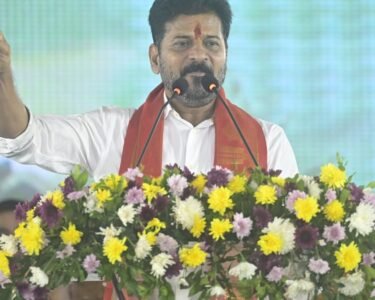New Delhi, May 12, 2025 — Following an intense 90-hour confrontation across land, sea, and air, India and Pakistan agreed to a ceasefire that took effect at 17:00 hours on May 10. While public debates rage over the nature of India’s response and some commentators compare Prime Minister Narendra Modi to former Prime Minister Indira Gandhi, analysts and defense experts emphasize that equating the 2025 situation with the 1971 India-Pakistan war is both inaccurate and hazardous.
Modern India, Modern Challenges
In 1971, India engaged in a conventional war that resulted in the liberation of East Pakistan and the creation of Bangladesh. Under Indira Gandhi’s leadership, India executed a bold and decisive campaign that crushed Pakistan’s military under General Yahya Khan. The war was conventional, the battlefield well-defined, and nuclear weapons were not in play.
Fast forward to 2025, the strategic environment has changed drastically. Though India’s military strength has grown exponentially and it remains the dominant power in South Asia, the dynamics of warfare and diplomacy have evolved. Pakistan, now a declared nuclear state, openly maintains a first-use nuclear doctrine. In today’s volatile environment, any full-blown conflict risks escalation to nuclear warfare — an unacceptable proposition not just for India and Pakistan, but for the entire region.
The Ceasefire: A Calculated Response, Not a Retreat
The recent military operation, dubbed Operation Sindoor, was aimed at neutralizing cross-border terrorist threats and punishing the perpetrators of recent attacks on Indian soil. While India succeeded in demonstrating both precision and strength, the decision to agree to a ceasefire came following a request from Pakistan’s Director-General of Military Operations (DGMO), who reached out at 15:35 on May 10.
India responded positively, setting the ceasefire to begin at 17:00. This response wasn’t born of military fatigue or weakness. Instead, it reflected a calculated move rooted in India’s long-standing doctrine of strategic restraint — a mature approach to de-escalate hostilities once objectives are met, while avoiding unnecessary conflict escalation.
A Different Geopolitical Playing Field
Unlike in 1971, where Cold War politics shaped India’s international maneuvering, today’s world is defined by interconnected interests. Major powers such as the United States, China, and Russia now prioritize stability in South Asia, particularly to prevent a nuclear crisis. Their pressure on both New Delhi and Islamabad to avoid further escalation cannot be ignored.
Moreover, India’s global stature has changed dramatically. It is now seen as a responsible power that actively contributes to global peacekeeping, economic development, and climate action. Any rash or disproportionate action could risk global goodwill, economic investments, and strategic partnerships — all of which are critical to India’s rise.
Pakistan: Still a Rogue Actor
While India has transformed into a responsible global player, Pakistan continues to be hampered by economic instability, a compromised political setup, and an increasingly radicalized military establishment. Despite its collapsing economy, it still harbors and supports internationally designated terrorist groups. Its close ties with organizations like Lashkar-e-Taiba and Jaish-e-Mohammed make it an unpredictable actor on the global stage.
The nuclear factor adds a dangerous layer. Experts believe Pakistan was pushed to request a ceasefire after Indian forces decisively dismantled multiple terror bases. However, fear of being cornered into a larger defeat — potentially triggering irrational nuclear retaliation — led global players and India to push for a halt to the fighting.
Modi vs. Indira: Two Eras, Two Realities
Drawing parallels between PM Modi and Indira Gandhi ignores the vastly different contexts. Gandhi’s leadership in 1971 was defined by a decisive victory in a conventional war. Modi’s leadership in 2025, on the other hand, is marked by balancing force with caution. Under his administration, India has consistently pursued counter-terror operations without falling into the trap of full-scale war.
The ceasefire after Operation Sindoor is not a sign of hesitation — it’s a message that India will retaliate when provoked but will also show restraint when necessary. Modi’s approach has been to neutralize threats without inviting global condemnation or risking a catastrophic escalation.
Conclusion: Victory in Restraint
In the end, true strength lies not just in the ability to strike, but in the wisdom to stop. The India of 2025 has nothing to prove through outdated models of warfare. Instead, it continues to forge its path as a responsible superpower that stands against terrorism, protects its citizens, and chooses diplomacy when it serves national interest.
While comparisons to 1971 may stir nostalgia, they overlook the dangerous unpredictability of modern-day geopolitics. Today’s India knows when to strike — and when to stop. That, in itself, is the new definition of victory.







